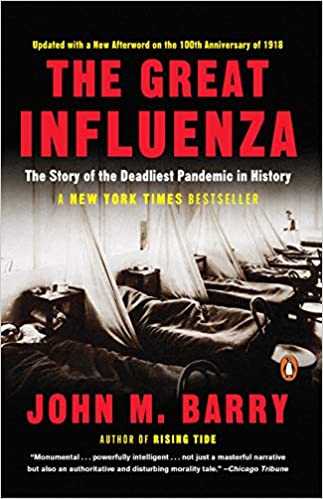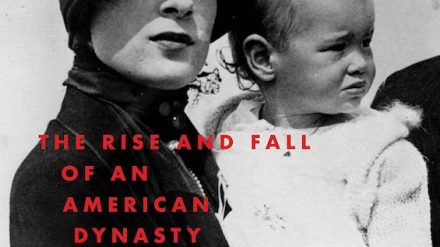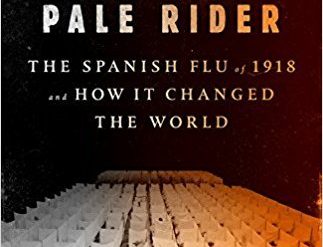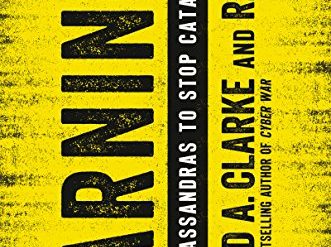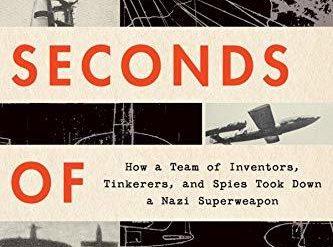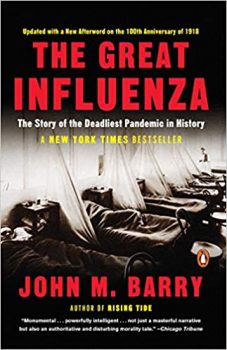
A century ago a pandemic disease far more lethal than COVID-19 killed an estimated fifty to one hundred million people around the world—as many as one out of every twenty people then alive. The 1918 flu epidemic erupted during a war that had already killed tens of millions and at a time when medical science was far less accomplished than it is today. Although there are lessons to learn for our response to COVID-19, it’s important to view what happened then in its historical context. And that’s the approach John M. Barry so brilliantly takes in The Great Influenza. This engrossing book may well be one of the very best ever written on medical history.
The historical context of the 1918 flu epidemic
As Barry makes clear, medical science had taken big steps forward in the decades before the pandemic erupted, especially in the United States. Half a century earlier, German researchers, and French to a lesser extent, led the world in medical research. However, by the outbreak of World War I, two institutions had spearheaded immense advances in American medicine: Johns Hopkins Hospital and the Rockefeller Institute for Medical Research (later Rockefeller University).
The Great Influenza: The Story of the Deadliest Pandemic in History by John M. Barry (2005) 546 pages ★★★★★
Johns Hopkins Hospital, founded in 1889, had been established expressly to bring the scientific method into the teaching and practice of medicine in the United States. The Rockefeller Institute set out from day one to become the world’s most important medical research institution, and many observers have expressed the opinion that it succeeded very shortly after its establishment in 1901. Barry traces the evolution of both Johns Hopkins and the Rockefeller (as they were then known) through in-depth sketches of the prominent physicians who led them. Those doctors, the heroes of the tale, played leadership roles in combating the 1918 flu epidemic, advising the military and government at all levels on precautionary measures and researching the origins of the disease and possible treatment. Unfortunately, they made little headway in either respect.
Why the disease spread so widely and so quickly
The doctors’ increasingly strident insistence on warning the public about the epidemic were met with rigid resistance until hundreds of thousands of Americans had already died. The Wilson administration had instituted draconian measures to prevent any news from reaching the public that would turn its attention from the need to support the war effort. Although press censorship was not in force, the nation’s press almost uniformly self-censored, parroting the official line that the disease was not serious while bodies piled up in the morgues. The result then, as it is today in the COVID-19 pandemic, was that those who denied the problem lost the public’s trust. But the biggest reason the influenza spread so widely and so quickly was the insistence of the US Army on transferring troops in large numbers from one base to another in crowded trains and then overseas in crowded ships.
The 1918 flu epidemic was “the deadliest pandemic in history”
Although up to five percent of the world’s population—and “as many as 8 to 10 percent of all young adults then living—died from the so-called “Spanish influenza,” its impact was not limited to the appalling death toll. Naturally, the pandemic greatly influenced the course of medical research and the adoption of public health measures far more widely than had been the case. But its consequences were far-reaching both in the conduct of World War I and in the shape of the peace that emerged from the conflict. Barry skillfully explores both themes in The Great Influenza.
How the epidemic helped defeat Germany
In April 1918, German commander Erich Ludendorff began “his last great offensive—Germany’s last real chance to win the war. The . . . offensive made great initial gains.” But then it stalled. Barry quotes the diary of a US Army surgeon stationed near the front: “‘The expected third phase of the great German offensive gets put off from day to day . . . I gather that the epidemic of grippe which hit us rather hard in Flanders also hit the Boche worse, and this may have caused the delay.'” In fact, Ludendorff himself “blamed influenza for the loss of initiative and the ultimate failure of the offensive.” No single battle necessarily changes the course of any war (although Midway, Stalingrad, and the Normandy Invasion are all claimed to have done just that in the next war.) But contemporary observers in 1918, and military analysts now, seem to agree that however slim the likelihood that Germany might end up victorious was certainly then lost.
How the 1918 flu epidemic helped cause World War II
Historians agree that the Treaty of Versailles that brought World War I to a close was a disaster. The excessive pain it imposed on Germany is almost universally acknowledged to have led in virtually a straight line to the Second World War. Yet that treaty took the form it did only because, midway through the peace conference, the world’s most popular statesman, Woodrow Wilson, suddenly and unaccountably “abandoned principles he had previously insisted upon. He yielded to [French Prime Minister Georges] Clemenceau everything of significance Clemenceau wanted, virtually all of which Wilson had earlier opposed.” Clemenceau was the primary architect of the harsh provisions incorporated into the treaty.
Most accounts of Wilson’s strange turnabout at Versailles ascribe it to a minor stroke he suffered. The President was, in fact, in his sickbed when he made the fateful decision. However, Barry cites powerful evidence that Wilson had not in fact suffered a stroke. He had the flu. “Wilson’s actual symptoms—including high fever, severe coughing, and total prostration, [were] all symptoms that perfectly fit influenza and have no association whatsoever with stroke . . . Indeed, the virus may have contributed to the [severe] stroke” Wilson suffered much later that incapacitated him and led to his death.
Where the “Spanish flu” really originated
Within months of its appearance in the United States, the 1918 flu epidemic quickly went pandemic throughout Western Europe. The “Great War” was in its final months at the time, and rigid press censorship was in force on both sides of the trenches. Thus, even though thousands of American, French, British, and German troops were falling ill throughout the war zone, no news about their plight reached the home front in any one of the combatant countries. Neutral Spain, however, was different. There, alarmist reports about the virulence of the fast-spreading disease were splashed all over front pages. And that was how the epidemic came to be dubbed the “Spanish flu.”
In fact, as Barry reports in detail, the deadly strain of H1N1 influenza at the heart of the 1918 flu epidemic almost certainly originated in Haskell County, Kansas, early that year. From there, the disease made its way eastward to a huge army “cantonment” where tens of thousands of troops were preparing to be shipped to France as cannon fodder for “Black Jack” Pershing‘s push against the German lines. Tens of thousands never made it there, falling victim instead to the flu. And, in carrying the disease to Europe, they triggered its spread to both Allied and enemy troops as well as civilian populations throughout Western Europe and ultimately to the rest of the world.
How the 1918 flu epidemic was different from COVID-19
In two major respects, the pandemic of a century ago differed significantly from what we are experiencing as I write:
- Influenza is a respiratory disease that primarily attacks the lungs, nose, and throat. When it kills, it does so primarily through pneumonia. Although COVID-19 was initially feared to be similar in its effects, it is in truth a vascular disease that manifests through the circulatory system.
- It’s difficult for scientists to calculate the mortality (death) rate of a disease. But it is clear that the H1N1 influenza virus that emerged in 1918 was far more lethal than the COVID-19 strains that have been seen to date. Hundreds of thousands are dying today. Eventually, it seems likely that globally millions will do so. But it seems highly unlikely that the death toll will rise into the tens of millions as was the case a century ago. (For historical perspective on this question, see Apoorva Mandavilli’s article in the New York Times (August 14, 2020), “In N.Y.C.’s Spring Virus Surge, a Frightening Echo of 1918 Flu.”)
However, there is one significant way in which the two pandemics are similar. History tends to refer to the earlier pandemic as the “1918 flu epidemic,” suggesting that a first, relatively mild strain broke out in the spring of that year, followed by a second, far more lethal strain in the fall. In fact, though, the second wave lasted until 1919—and there was a third wave in 1920. Medical researchers tell us that COVID-19 is almost certain to behave in a similar fashion. As I write, we are experiencing either the first or the second wave of the disease (the experts differ). Yet another outbreak seems certain, with or without the speedy development of a vaccine—polyannish predictions to the contrary notwithstanding.
For further reading
I’ve reviewed four other books about epidemiology:
- The Premonition: A Pandemic Story by Michael Lewis (What went wrong in the COVID pandemic?)
- Pandemic: Tracking Contagions from Cholera to Ebola and Beyond by Sonia Shah (The existential threat of contagious disease)
- Spillover: Animal Infections and the Next Human Pandemic by David Quammen (Where do all those emerging diseases come from?)
- Pale Rider: The Spanish Flu of 1918 and How It Changed the World by Laura Spinney (Was the Spanish Flu of 1918 a greater disaster than World War II?)
And you can find more books on related topics at Books about epidemic disease and the COVID-19 pandemic.
You might also be interested in:
- Science explained in 10 excellent popular books (plus dozens of others)
- 20 top nonfiction books about history plus more than 80 other good ones
And you can always find my most popular reviews, and the most recent ones, plus a guide to this whole site, on the Home Page.

